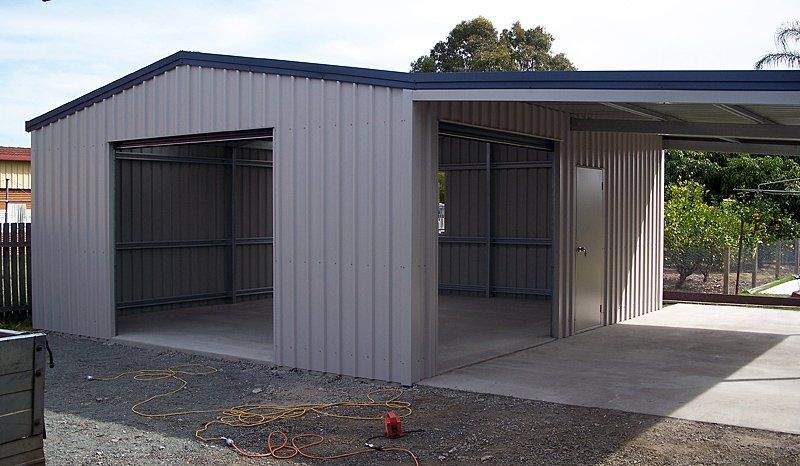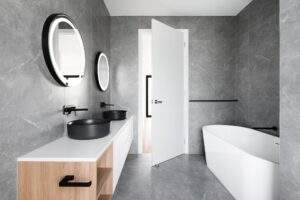8 Reasons Why Steel Buildings Are Preferred for Residences

Steel buildings are low maintenance, offer multiple guarantees for construction, roofing, and color, and require no parts every few years. The most significant advantage of a steel building is its price compared to traditional construction methods such as wooden frames.
Why are Steel Buildings the Best Choice for Residential Buildings?
Steel is a popular building material because it is strong without being too heavy. It makes it an ideal material for large multi-story buildings as well as production and industrial facilities. Unlike wood, steel can withstand moisture and is less susceptible to termites and fire.
1. Steel Buildings Have Strength
Steel structures offers architects more design freedom in terms of color, texture, and shape. The combination of strength, durability, beauty, precision, and flexibility provides architects with a broader range of parameters for researching ideas and developing new solutions. The extended steel capacity creates large open spaces without intermediate columns or load-bearing walls.
The steel’s finish is a mill finish to the most precise specifications under tightly controlled and more predictable and repeatable conditions, eliminating the risk of on-site fluctuations.
2. Fast Efficient and Resourceful
You can install steel quickly and efficiently at any time of the year. Components are built off-site with little on-site labor. The entire framework can be made in days instead of weeks, with construction times being reduced by 20% to 40% compared to building on-site, depending on the project’s scope. For single-family homes in more challenging locations, steel often allows fewer contact points with the ground, which means less digging is required.
Compared to other frame materials such as concrete, the lower weight of structural steel allows for a smaller and simpler base. This implementation efficiency translates into significant resource efficiency and economic benefits, including accelerated project schedules, reduced site management costs, and prior ROI.
3. Adaptable and Accessible
Currently, the function of a building can change drastically and rapidly. The tenant may wish to make changes that will significantly increase the stress on the floor. Walls may need to move to create new interiors based on different space requirements and uses. Steel structures can cope with these changes.
Unassembled steel beams assemble with existing floor slabs, roof tiles add to the beams for strength. Reinforce the beams, and support beams can and supplemented with additional frames or even moved to carry changed loads. The steel frame and floor systems also allow easy access and change to existing electrical wiring, computer network cables, and communication systems.
4. Recyclable
When a steel frame building destroys, its components can be reused for smelting and rerouting or returned to the steel industry’s closed recycling system. Steel saves natural raw materials because about 30% of new steel comes from recycled steel.
5. Fire Resistant
Extensive testing of steel structures and complete steel structures has provided the industry with an in-depth understanding of how steel buildings react to fire. State-of-the-art design and analysis techniques allow for the precise refinement of fire protection requirements for steel-framed buildings, often resulting in significant reductions in fire protection required.
6. Earthquake Resistant
Earthquakes are unpredictable in terms of strength. Steel is an excellent material for design because it is naturally made of plastic and is flexible. It flexes under extreme loads instead of crumbling or crumbling.
Many beam-to-column joints in steel buildings accommodate gravity loads. However, they can withstand side loads from wind and earthquakes.
7. More Usable Space and Less Material
Steel’s ability to maximize interior space and width with a casing as thin as possible means are achieving lighter and smaller structural elements. Steel beam depth is about half that of wooden beams and, compared to other materials, offers more usable space, fewer materials, and lower costs.
The thickness of the walls can be thinner because, because of the steel’s strength and the excellent covering capacity, there is no need to build a solid brick wall that takes up space. It can be essential for very confined properties where space-saving steel properties can be the key to overcoming spatial challenges.
8. Less Impacting Environment
Steel structures can be much lighter than concrete and require a foundation that is not very large, thus reducing the impact of the building on the environment. Fewer, more lightweight materials mean they are easier to move and reduce transportation and fuel consumption.
Steel foundation piles can be recovered and recycled or reused if necessary. It can be done at the end of the building’s life without residual waste on-site. Steel is also energy efficient because heat quickly radiates from the steel roof, creating a more relaxed living environment in hot climates.
Conclusion
The most crucial steel properties are high form-ability and durability, good tensile and yield strength, and good thermal conductivity. Apart from these essential properties, the most characteristic feature of stainless steel is its corrosion resistance.







